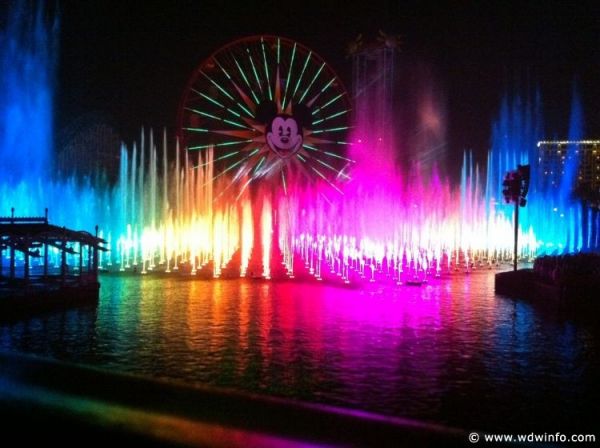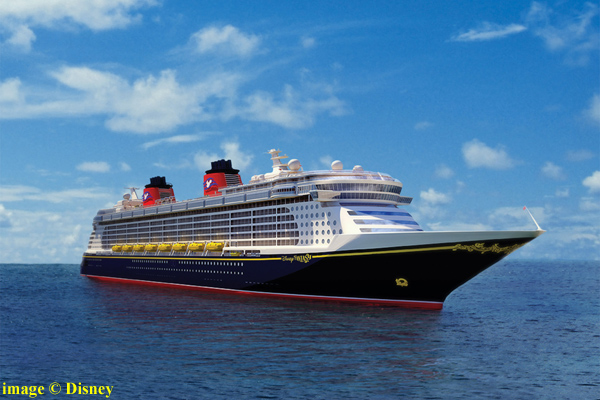post by Jack Burgin
The Walt Disney Company released its final quarter earnings report on November 11, 2010. The report is, of course, chocked full of large dollar amounts (Disney’s figures start at a million dollars). Others can and already have better analyzed Disney’s earnings. I will try to go behind the numbers and try to discern what the report says about future plans for Disney’s theme parks and cruise line.
Disney’s earnings reports review revenue and “operating income” (essentially profit) for its fiscal year (which ended at the beginning of October). The report only compares current year to prior year but going back another year (to FY 2008) will help to add perspective to 2010 parks and resorts (which includes cruise lines) earnings. (Here is the wonkish part.) 2010 revenue for theme parks was all but flat; compared to 2009, revenue increased 1 percent. 2009, however, wasn’t exactly a stellar year for Disney (or many other companies) as revenues were down 7 percent over 2008 (understand, however, that FY 2008 “delivered record domestic theme park attendance”). Operating income was even worse. 2010 operating income was down 7 percent from FY 2009 which was itself down 25% from FY 2008. None of this means the parks are in imminent danger. Far from it. These figures reflect the economy and deep discounts in 2009 and not so deep discounts that continued to 2010.
But enough with the financials. Disney attributes the 2010 decline in operating income to:
“higher costs at our domestic resorts, lower hotel occupancy and attendance at Walt Disney World Resort and a decrease at Disney Cruise Line, partially offset by higher guest spending at our domestic resorts, primarily due to higher average ticket prices and increased attendance at Disneyland Resort. Increased costs at our domestic resorts reflected labor cost inflation, higher pension and post-retirement medical expenses and costs for new guest offerings including World of Color at Disneyland Resort.”

Obviously, World of Color has had a positive impact on attendance. But occupancy/attendance at Walt Disney World and on the cruise line is down. Guests are coming to Walt Disney World but they are not staying on site as much or as long (which tends to explain why Magical Express ridership was down 3.8 percent for the first 9 months of 2010). That is not surprising, as Disney ran significant discounts in 2009 (remember the “Buy 4, Get 3 Free” program?). Disney can’t expect the less generous discounts in 2010 to generate the same visitation figures. Disney is walking a fine line between weaning guests off of what it considers to be deep discounts and avoiding a dramatic drop in room occupancy.
A different section of the report addresses capital expenditures, which includes the cost of expanding Fantasyland, World of Color and the redevelopment of California Adventure (not to mention two new cruise ships). For FY 2010, domestic capital expenditures amounted to about $1.3 billion. To put this in perspective, total capital expenditures for 2010 were slightly more than 2.1 billion so more than half of all of Disney’s capital expenditures were devoted to domestic Parks and Resorts.
While all of this may seem like bad news for investors (it sure isn’t good news) it shows that discounts and promotions for theme park guests (but less so for cruise line passengers) are not going to end anytime soon. Disney’s President admitted as much in the “earnings call” (a transcript is available) which Bob Iger and Jay Rasulo held with investment bankers. Iger:
“We’ve always had promotions in the marketplace for Parks and Resorts, primarily for what we call shoulder periods or the times of the year that you don’t have peak travel, and we’re going to continue to do that. But what we’re seeing in the marketplace today is that even those promotions are of slightly shorter duration than they had been and slightly better pricing than they had been, and we hope that we continue to trend more in that direction.”
Of course, “better pricing” to Iger translates into “higher prices” for guests.
Looking to the 2010 holiday period, Rasulo made a point of saying that so far “domestic hotel reservations on the books are pacing 5% ahead of prior year.” But for the same period in 2009, “domestic bookings at our resorts are running roughly 5% behind this time last year” so 2010 holiday bookings are flat compared to holiday bookings in 2008. At the time, however, Disney characterized 2008 holiday bookings as being little short of disastrous: “the pace of bookings for our domestic resorts has slowed meaningfully since about the time of Lehman Brothers bankruptcy. Our current room reservations on the books for the first two quarters of our fiscal year are a little under 10% below the prior year.” If domestic bookings are going to return to where Disney wants them to be, look for promotions to continue. Just don’t expect to see the 2009 type of promotions unless something dramatic happens to the economy.

Expansion is also a plus for guests to Disney’s U.S. theme parks and cruise line. Understand that to an investor, capital expenditures cut into cash flow which in turn results in lower dividends (or stock buybacks). But by this point, Disney has committed to several large capital expenditures (which I mentioned above) leaving investors to ask when will they start seeing a return on that investment. Iger’s response was to say that each capital decision:
“is made discretely, meaning separate from the other one, and I think we’ve gone through a lot of the rationale but I’ll just quickly talk about it a little bit more as it relates to return on invested capital, which is a metric that we follow very closely and is in fact a key metric in determining compensation at the company as well.
On the cruise ship side, you know our returns on invested capital in that business have been stellar, in the mid teens, and it’s our goal to continue those returns in the new ships. Obviously it takes a little bit of time. We’re launching the Dream in January. There is some additional costs leading up to launch, as a for instance, but revenue doesn’t start flowing until we set sail with paying passengers. I don’t know how much detail Jay went into, but bookings for that ship have been extremely strong and we feel it’s a gorgeous ship and we feel quite good about not only the potential of that ship to deliver strong capital return on invested capital in the Caribbean but it’s going to give us the ability and flexibility for us to put the other ships eventually into new itineraries and new destinations, which we think will also be good.
California Adventure, I talk about it was a bit of a brand withdrawal as I said in a recent interview in that it was not returning value to us at a level that we would expect or hope for. We also thought that there was a negative brand impact, so we’re putting capital in to fix a problem that we’ve had for a long time, and to help grow the overall Disneyland resort. The results have been great with the World of Color but we have a lot more to deliver between now and 2012 so the revenue will flow over time. It’s already started but we won’t be seeing it in full until basically the latter part of 2012.”

I have focused only on the theme parks and resorts (and at that, I’m not looking at the reports as an investor but as a park guest). Oddly, a premature release of the Fourth Quarter report led Disney’s stock price to drop shortly before the market closed on 11/11/10 but by 11/12/10, the share price has not only rebounded but closed above its opening price on 11/11/10. Investors must like what they see after all.

Leave a Reply